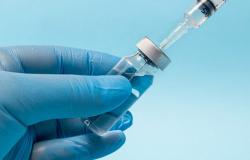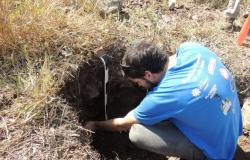Photograph: Gorodenkoff/Adobe Stock
Women over 65 are mainly affected; Population aging, lifestyle habits and late diagnosis of the disease help explain a worrying scenario
The mortality rate for breast cancerincreased 86.2% in 22 years in Brazil. This is according to a survey by Umane, a civil association dedicated to supporting public health initiatives. According to data collected from the Mortality Information System (SIM/SUS), this rate rose from 9.4 per 100,000 inhabitants in 2000 to 17.5 in 2022.
Furthermore, the research shows that the increase in the mortality rate due to the disease occurred in all age groups over 35 years old, with emphasis on women over 65 years old, who represented 179% of records. Next, a 140% increase is seen among women aged 55 to 64, followed by 81% in the 45 to 54 age group and 72% among those aged 35 to 44.
In the opinion of Maira Caleffi, head of the Breast Center at Hospital Moinhos de Vento, in Porto Alegre (RS) and volunteer president of the Brazilian Federation of Philanthropic Institutions to Support Breast Health (Femama), these numbers cannot be attributed to a single factor, but rather a series of interconnected elements. Among them, the changes in the age pyramid – Brazil is experiencing accelerated population aging – and the spike in the incidence of obesity.
According to data from the 2022 Census, from the Brazilian Institute of Geography and Statistics (IBGE), the percentage of people aged 65 or over in the country reached 10.9% of the population – a record high of 57.4% compared to the numbers of 2010, when elderly people represented 7.4% of the total. According to Maira, aging is intrinsically linked to an increase in cancer diagnoses, as, as the years go by, cells become more susceptible to mutating.
In the case of obesity, a problem that affects 1 billion people in the world according to the World Health Organization (WHO), Maira states that the most accepted thesis to consider the problem as a risk factor for cancer – and not just that of breast – is that adipose tissue increases the secretion of inflammatory substances, which stimulate the multiplication of cells – including cancerous ones.
“With the increasing consumption of industrialized and ultra-processed foods, obesity rates increase and, consequently, cancer rates as well”, says Maira. “The problem with this is that being overweight not only contributes to the development of the disease, but is also a risk factor for poor outcomes,” she added.
Doctor Luis Eduardo Werneck, vice-president of the Brazilian Society of Cancerology (SBC), highlights that we are all susceptible to developing cancer cells, but the body has elements considered “guardians of DNA”, which normally eliminate these diseased cells. It turns out that this security system can fail – both due to genetic predisposition and interference from environmental aspects, such as poor diet, sedentary lifestyle, smoking or excessive alcohol consumption.
“In recent decades, this interaction (with environmental factors) has become even more unfavorable, which may be related to the increase in mortality from the disease”, explains the specialist.
Early diagnosis
Despite the alarming numbers, breast specialist Fabiana Makdissi, leader of the Breast Tumor Reference Center at ACCamargo Cancer Center, in São Paulo, states that breast cancer is 100% curable as long as it is detected early. This information, in itself, carries the main hypothesis related to the increase in mortality in these 22 years: the disease has been diagnosed at an advanced stage.
According to the specialist, medical societies have come together to determine that the beginning of mammography, recognized as the best method for diagnosing breast cancer early, is recommended from the age of 40, while the National Cancer Institute (Inca) and the Ministry of Health recommend the procedure from age 50 onwards.
Based on her professional career, the president of Femama, Maira Caleffi, states that many women face breast cancer for years without even suspecting it, only discovering the disease when they seek emergency care.
“It is common to see cases in which the disease is already at an advanced stage, five years or more old, when it is finally diagnosed,” said Maira. “These women arrive with bleeding, large tumors, indicative of an already advanced condition. This means that the investment is happening at the wrong stage,” she added.
Social determinants
Also according to the study conducted by Umane, it was observed that the majority of deaths due to breast cancer occurred among women with a lower level of education, specifically those with up to seven years of study. 8,311 deaths were recorded in this group, which represents an increase of 189% compared to women who had 12 years or more of formal education, totaling 2,879 deaths. According to experts, the data highlights the relationship between mortality rates and the so-called social determinants.
In Fabiana’s view, it is necessary to recognize who the possible women are behind the death rates collected by Uname. Among them are those living in remote areas, facing obstacles in accessing health services and undergoing screening tests. “And when the diagnosis occurs, they often face a considerable gap between the treatments offered by the Unified Health System (SUS) and those made available by health operators”, highlights the doctor.
According to Werneck, the SUS is an important achievement for Brazil, but it is crucial to recognize that the quality and access to health services, especially when it comes to cancer treatment at advanced levels, is usually inferior when compared to private networks. Furthermore, services can also vary considerably between different Brazilian states.
“This discrepancy has been decreasing, but, due to the costs of new technologies, there are naturally many differences between the types of services offered”, says Werneck. “In early stages of cancer, such as 1 and 2, they are less noticeable. However, in more advanced stages, such as 3 and 4, they become more evident”, he added.
Prevention
Experts emphasize that there are several ways to prevent breast cancer, such as maintaining healthy eating habits, exercising regularly, quitting smoking and moderating alcohol consumption.
However, doctors emphasize that screening is a fundamental strategy. And, for this, there is still nothing that can replace mammography, even though, in some cases, ultrasound and magnetic resonance imaging are also necessary.
According to Maira, exams can be started earlier, especially if there is a history of breast cancer in the family, whether in women or men, or a bilateral tumor. In these cases, the recommendation is to consider screening tests even before the age of 40, a practice that can be essential to identify possible cases of the disease early. “Although genetic counseling provides valuable guidance, not everyone has access to this option”, recalls the doctor.
The mastologist highlights the importance of medical monitoring and complementing mammography with clinical examinations, especially in younger women, where mammography may have limitations. “Younger breasts tend to be denser, which makes it difficult to see lumps,” she explains.
Regarding self-examination, the specialist says it is important, but emphasizes that, alone, it can bring false peace of mind and prevent early diagnosis. “It should be associated with screening exams, but not left aside, because it represents an important form of self-knowledge in relation to one’s own body.”
Estadão
Tags: Breast cancer mortality rate increases Brazil understand reasons
--





